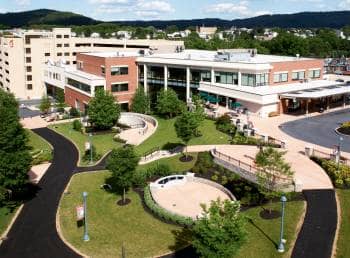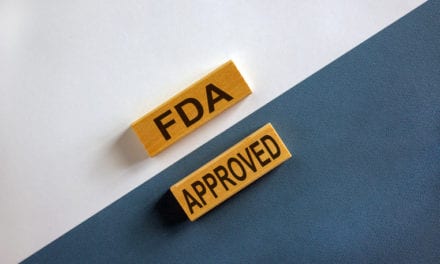
Founded as a home for children with disabilities and the elderly, Good Shepherd Rehabilitation Network now serves more than 60,000 people annually at more than 50 sites.
The mission of Good Shepherd Rehabilitation Network (GSRN), based in Allentown, Pa, is to help adults and children overcome their physical and cognitive challenges and achieve their maximum potential.
GSRN is a nationally recognized rehabilitation network, offering a continuum of post-acute care for people with disabilities. Founded in 1908 by The Rev. John H. Raker and his wife, D. Estella Raker, as a home for children with disabilities and the elderly, GSRN today offers adult and pediatric inpatient and outpatient rehabilitation for conditions ranging from joint replacements to stroke, and from infant feeding problems to neurological vision problems.
The 104-year-old GSRN Lehigh Valley (Pennsylvania) division operates 25 outpatient sites (free-standing and within assisted living facilities), four inpatient sites, 1 long-term acute care hospital, and two long-term care homes for people with severe disabilities. The division also operates one independent living facility, a Work Services division that provides employment training and job placement, and a lifestyle products online store (www.RehabilityStores.com).
GSRN also is the majority owner of Good Shepherd Penn Partners (see sidebar), a joint venture with Penn Medicine in Philadelphia.
For GSRN, operating revenues grew by 62% from fiscal year 2008 through fiscal year 2011 (with Lehigh Valley division and GSPP combined). GSRN is a $200-million organization that serves more than 60,000 people annually at more than 50 sites in eastern Pennsylvania and New Jersey. Under the leadership of its president and chief executive officer (CEO) Sally Gammon, FACHE, Good Shepherd’s carefully planned growth has included new facilities and services, campus renovations and partnerships with leading health-care organizations such as Penn Medicine.
INPATIENT REHABILITATION GROWING
Today, Good Shepherd is experiencing census growth at the Good Shepherd Rehabilitation Hospital—Allentown, and now has 74 total beds at the inpatient facility to accommodate demand. At the Rehabilitation Hospital, Good Shepherd’s physicians, nurses and therapists (physical, occupational, speech and recreational) work in specialized teams for orthopedic, stroke, brain injury, spinal cord injury and other neurological diagnoses. Patients receive up to three or more hours of therapy each day as part of GSRN’s commitment to provide the highest level of inpatient outcomes.
PEDIATRIC UNIT: A SUCCESS STORY
Opened in 2009, the 16-bed Good Shepherd Rehabilitation Hospital Pediatric Unit has earned a regional and national reputation for excellent outcomes and compassionate care. Beating census projections well in advance of a 4-year schedule, the Pediatric Unit has a waiting list on many days. The Pediatric Unit provides inpatient rehabilitation services to newborns through 18-year-olds. Specialized programs in brain injury, spinal cord injury and second chance (for children with a long-standing disability who had a change in status that would benefit from inpatient therapy) have helped spur referrals to the unit.
The Pediatric Unit’s Feeding Program is one of only a handful in the country for infants who are not eating properly. The Unit’s therapists are trained in SOS (sequential oral sensory) and Beckman Oral Motor training techniques, which help infants overcome feeding disorders.
A LEADER IN REHABILITATION TECHNOLOGY
Therapists at GSRN are specially trained in using technology to help patients regain function from injuries and debilitating diseases as quickly as possible. Upper-extremity and lower-extremity bionic devices are used to facilitate and guide motor function and control. Computer-assisted technologies provide neuro-stimulation and aid in accelerating recovery of function in affected extremities. Technology in the area of functional electrical stimulation is employed with swallowing training, limb movement and exercise of paralyzed extremities.
In May of 2011, GSRN’s neurorehabilitation therapists and patients took part in a week-long trial of Berkeley Bionics’ eLEGS robotic exoskeleton. eLEGS powers up those with lower-extremity paralysis to stand and walk. GSRN was selected by Berkeley Bionics as one of 10 top rehabilitation centers in the United States to help study eLEGS as it is refined for use in the rehabilitation setting. In January 2012, GSRN is expected to receive its own eLEGS exoskeleton, which will become part of the outpatient neurorehabilitation technology offerings.
Some of the other rehabilitation technologies that are being trialed or are being used in the rehabilitation process with neurorehabilitation patients include: Tibion Bionic Leg, Myomo® System, Dynavision™ and Reo™ Go.
GSRN also provides state-of-the-art mobility, communication and environmental systems to people with disabilities through its Assistive Technology Program.
STAYING AHEAD OF HEALTH-CARE CHANGES
GSRN’s leaders focus on intermediate and long-range strategic goals to maintain out-standing patient outcomes while ensuring the organization’s future viability. Planning and meaningful growth are important for any organization, but strategic flexibility is now vital due to the current and anticipated changes associated with health-care reform.
In preparing for bundling, GSRN is seeking agreements to position the organization as a post-acute care partner with regional health-care networks. GSRN’s staff is working with regional hospitals on episode-of-care planning that will improve care quality while reducing costs. The implementation of episode-of-care plans also will impact patient re-admissions to the acute care setting.
GSRN is working toward implementing information technology necessary for exchange of patient data with other healthcare providers. The process of selecting a vendor for an electronic health record (EMR) is well underway. In recent years, GSRN began using technologies for clinical documentation, infection monitoring and medication distribution that have improved efficiencies and helped ensure high functional outcomes. Furthermore, GSRN is testing telemedicine in its Rehabilitation Hospital, and has successfully employed the technology at one location.
SERVICE LINES FOR POST-ACUTE CARE
While a service line structure is not uncommon in the acute care setting, GSRN is working toward establishing four service lines for post-acute including Musculoskeletal/Orthopedic Rehabilitation Service Line, Neurorehabilitation Service Line, Pediatric Rehabilitation Service Line, and Cardiopulmonary/Complex Medical Service Line.
As in acute care, establishing high-functioning service lines in the post-acute setting will result in greater efficiencies in providing quality care while reducing costs. The service line structure will keep GSRN’s senior leaders focused on business goals that drive the success of those services, while focusing marketing resources on those areas where capacity exists for additional high-quality, cost-effective patient care.
STRONG PARTNERSHIPS MATTER
Never in the history of health care have partnerships been more important. GSRN excels at partnering with organizations that match its mission and values. GSRN currently has operational and clinical partnerships with Penn Medicine (see sidebar below), Easton Hospital (Easton, Pa), Wayne Memorial Hospital (Honesdale, Pa) and Pocono Medical Center (East Stroudsburg, Pa). GSRN also is proud of the strong relationships it maintains with many community and nonprofit organizations, such as the National Multiple Sclerosis Society.
“Good Shepherd’s Board of Trustees, Good Shepherd Penn Partners’ Board of Directors and both organizations’ management teams deserve credit for helping to advance our strategic vision and growth,” says Sally Gammon, president and chief executive officer, GSRN, and chair, GSPP Board of Directors.
GSRN’s growth and success align with the innovative spirit of the organization’s found-ers, and that innovative spirit continues to guide Good Shepherd’s mission and vision for the future.
GOOD SHEPHERD PENN PARTNERS
Good Shepherd Penn Partners
1800 Lombard Street
Philadelphia, PA 19146
877-9MY-REHAB
www.PhillyRehab.com
Linda Dean-Hayes, MSN
Interim Executive Director
215-893-2541
Kim Grosch
Director of Therapy Services
(and Contract Services)
Penn Therapy and Fitness
215-662-3503
Good Shepherd Penn Partners (GSPP) opened its doors in July 2008, bringing together two nationally respected healthcare organizations to provide the Philadelphia region with a continuum of post-acute care.
GSPP now operates the following: GSPP Specialty Hospital at Rittenhouse, a 38-bed long-term acute care hospital owned by GSPP; Penn Institute for Rehabilitation Medicine, a 58-bed inpatient rehabilitation hospital licensed to Hospital of the University of Pennsylvania and managed by GSPP; GSPP Penn Therapy and Fitness, which includes 10 outpatient sites in Pennsylvania and New Jersey owned by GSPP; and inpatient rehabilitation care for Penn Medicine’s three acute-care hospitals, which is managed by GSPP.
GSPP is a joint venture of Good Shepherd Rehabilitation Network (majority owner) and Penn Medicine. Combining the respected research and clinical expertise of Penn Medicine with GSRN’s 104-year tradition of outstanding rehabilitation care resulted in the optimization of evidence-based rehabilitation care in the Philadelphia region.






